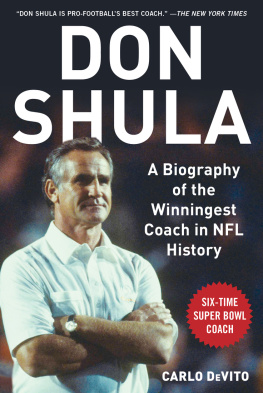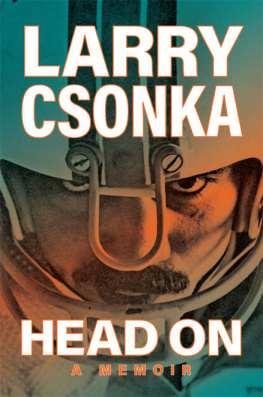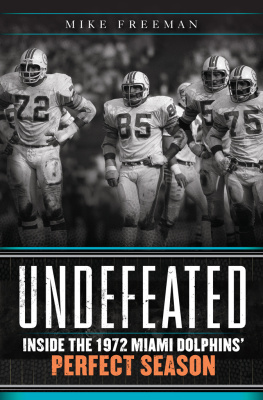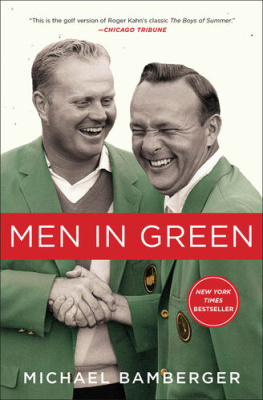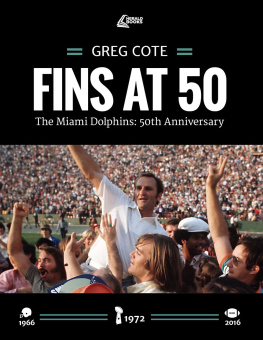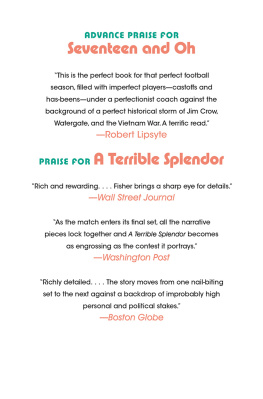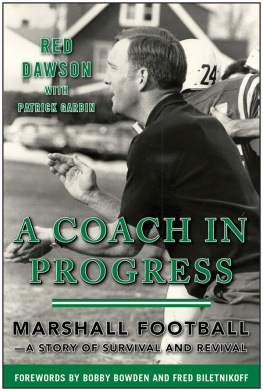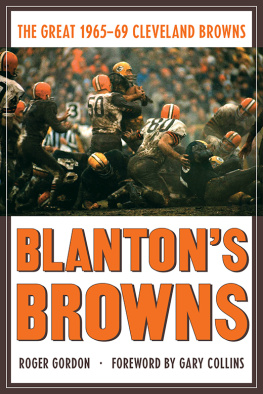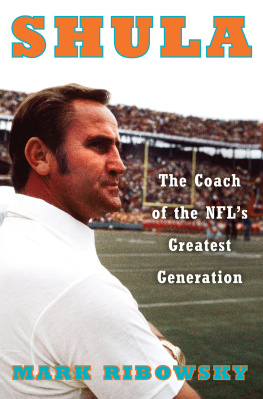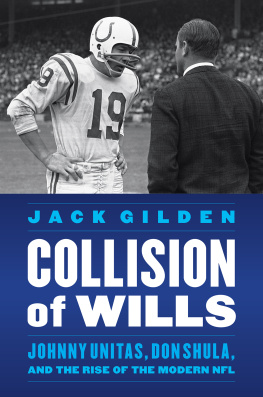
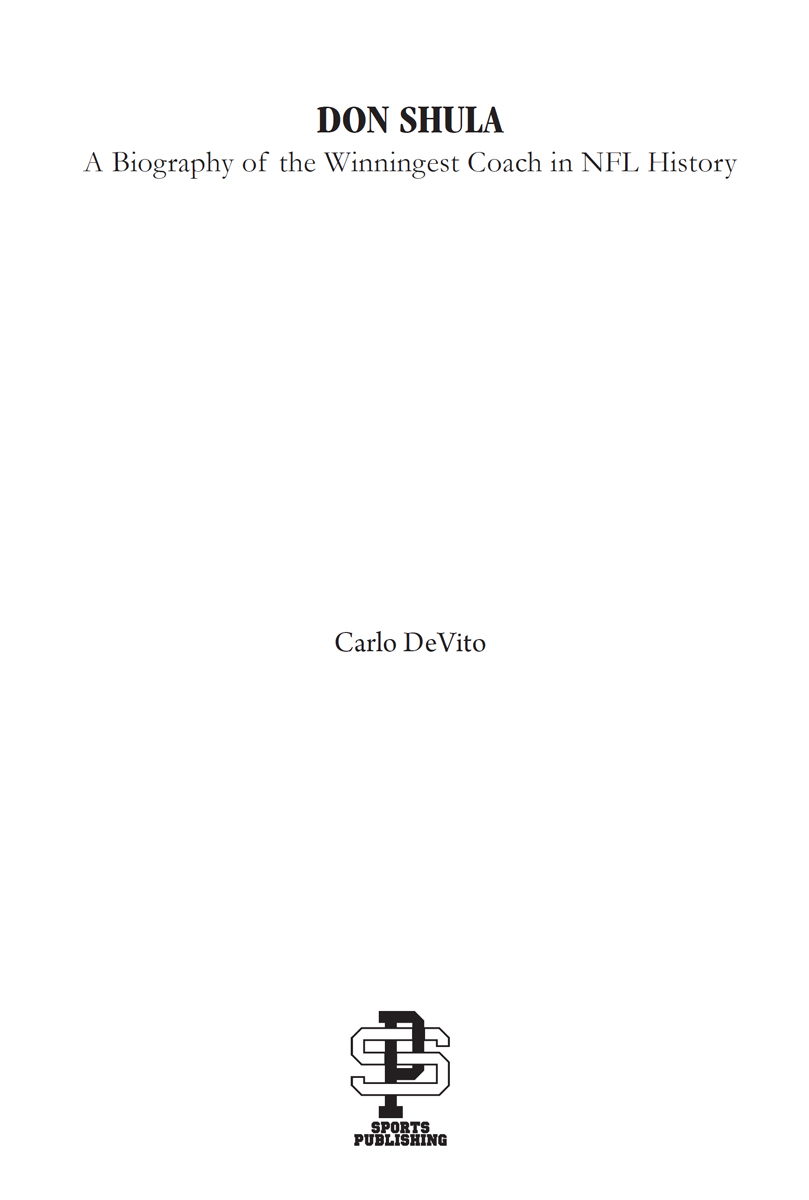
Copyright 2018 by Carlo DeVito
All rights reserved. No part of this book may be reproduced in any manner without the express written consent of the publisher, except in the case of brief excerpts in critical reviews or articles. All inquiries should be addressed to Sports Publishing, 307 West 36th Street, 11th Floor, New York, NY 10018.
Sports Publishing books may be purchased in bulk at special discounts for sales promotion, corporate gifts, fund-raising, or educational purposes. Special editions can also be created to specifications. For details, contact the Special Sales Department, Sports Publishing, 307 West 36th Street, 11th Floor, New York, NY 10018 or .
Sports Publishing is a registered trademark of Skyhorse Publishing, Inc., a Delaware corporation.
Visit our website at www.sportspubbooks.com.
10 9 8 7 6 5 4 3 2 1
Library of Congress Cataloging-in-Publication Data is available on file.
Cover design by Tom Lau
Cover photo credit Associated Press
ISBN: 978-1-68358-233-5
Ebook ISBN: 978-1-68358-235-9
Printed in the United States of America
Dedicated to the one true coach in our family, Thomas DeVito
He moved from single-bar face mask to Darth Vader visors on players who evolved from crew cuts to curls to shaved heads. He won with Hall of Famers, and he won with a quarterback who taped the plays to his wrist. He won smashing mouths and won airing it out. Always, he won by being a man on fire.
Dave Kindred in The Sporting News
CONTENTS
Introduction
There were two things that were important to Don Shula: family and football. It was not surprising that eventually they would intertwine.
He was first and foremost an Ohio boy, raised in a small community with a large and wide network of hardworking laborers. His family was never poor, always had clothes, a roof, and enough to eat. This was accompanied by discipline, love, and religion. Like his mother, Mary, Don was a devout Catholic all his life, yet not proselytizing.
His career as a coach was legendary. He was a head coach in professional football for 33 years. Thats a remarkable feat in and of itself. The only man who rivaled that was George Halas, 40 seasons as head coach, but he also owned his team. Shula coached 20 more games than Halas but finished with 23 more wins (including postseason). Halas had a winning percentage of .671, Shula finished with .665. Shula went to six Super Bowls and won two. He helmed the only undefeated championship team in NFL history. He was 61 in AFC championship games. He was voted Coach of the Year four times and was was enshired in the Pro Football Hall of Fame.
His career had several other benchmarks. Some of these events alone would be enough to make a notable career for some men. He coached in two of the longest and most memorable playoff games in the history of the league, against the Kansas City Chiefs in December 1971 and the San Diego Chargers in January 1982. During his playing career, he was part of the game that had the most penalties in the history of the NFL. He was involved in one of the largest trades in NFL history. He presided over the famed Snowplow Game and Dan Marinos fake spike and Tom Mattes two playoff games at quarterback. He graduated 13 players to the Pro Football Hall of Fame. But perhaps the most impressive fact was he only had two losing campaigns in 33 seasons.
Perhaps more important, he also helped orchestrate the massive changes that took place in the NFL. He played wearing a leather helmet (and no face mask) and later helped lead the league to the development of the modern passing game that is the hallmark of the game today. Not only was he a coach and a player, but he was cochairman (along with close friend George Young) of the all-powerful competition committee. In an era when he was winning with a smashmouth running attack, he helped forge the new game geared toward passing and offense. The new rule changes that he helped usher in eventually made some of his own teams obsolete. Yet for the better good of the game and the league, he saw its popularity and success would be tied to the new passing attacks of Don Coryell and Bill Walsh.
If we compare him to others, what do we see? Only seven men have ever won 200 or more games in the history of the NFL. In his career, he outlasted such names as Paul Brown, Tom Landry, Chuck Noll, and John Madden.
He was not without his faults. He had a volcanic and titanic anger. And he was known to not only lose his temper, but to let loose with strings of abusive language that he directed at players, coaches, owners, and officials. He would spew venom and anger like a cannon but be perfectly serene minutes later. As he often said, finesse was not his forte.
He was in some ways a hypocrite. As a player, he hung around in the most roguish of circles and performed his own legendary hijinks. As a coach, his favorites often tended to be the bad boys, but on the field, he expected perfection in all other ways, including a devotion to the game that coincided with his own obsessive drive.
His greatest attribute was also his greatest flaw. To quote former Oilers and Saints coach Bum Phillips, He can take hisn and beat yourn and take yourn and beat hisn. His ability to win with the talent that he had at hand was an amazing attribute. He could win with a smashmouth offense, he could win with the passing offense, he could bludgeon you with a brutal defense. He once won a playoff game with a fourth-string quarterback (a halfback turned quarterback) who only knew a dozen plays, which were taped to his forearm.
Yet this unique ability also betrayed him. He often was able to elevate teams through the regular season and the playoffs masking his own clubs flaws, only to be exposed in championship games by teams who were better balanced or more talented. It is still inconceivable that he was able to bring Woodstrock to a Super Bowl, or the Marino team that had no real running attack or stout defense.
He also handled some of the greatest players in the history of the game. His up-and-down relationship with the great Johnny Unitas was legendary. He also enjoyed father-son relationships with Larry Csonka, Bob Griese, Dan Marino, and Nick Buoniconti.
Cleveland, Baltimore, and Miami were three of the most important places in his life. The Greater Cleveland area would always be home in his heart and was the seed of his character. Wherever he went and whatever he became was forged there. In his early years, he returned to his family and childhood friends. In later years, he quipped, he returned for weddings and funerals, but that was not entirely true. He helped raise money for local schools and charities, most notably his alma mater, John Carroll University.
Baltimore was the equivalent of his first love. The city would be the backdrop to both his greatest triumph (the 1968 NFL championship) and most memorable losses (the 1964 championship loss to Cleveland; the inexplicable upset in Super Bowl III). And like many first loves, that affair did not end well. But he would always have a warm place in his heart and misty look in his eyes for the city by the Chesapeake.
And then there was Miami. It was the town that he made famous and that made him famous... and wealthy. Outrageous triumph, in defiance of all odds, was topped only by more notable losses, and spectacular events.
And through it all lay family. Fealty, pride, and a fierce love made him cherished, despite his professional zeal that sometimes set him apart, made him seem unreachable, or seemingly distant, even to those close to him. He established one of only two three-generation family coaching trees in NFL history. His two sons both became NFL coaches, and now a grandson, as well. Even in retirement, he forged, with the help of others, especially his son David, a top-five largest high-end steakhouse chain in the country, competing with Ruths Chris, the Palm, and Mortons, among others.
Next page
